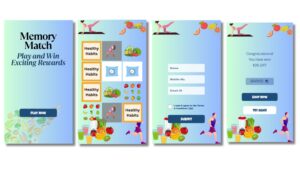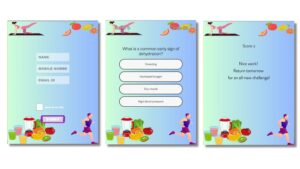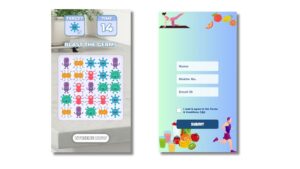In a world where attention spans are shrinking and healthcare literacy still has a long way to go, traditional methods of patient education and engagement often fall short. Enter gamification—a powerful tool that combines game design elements with real-world objectives to motivate, educate, and transform healthcare experiences.
In this blog, we’ll explore how gamification is shaping modern healthcare, backed by statistics, real-world examples, and how you can apply it using games from Playzo.io.
Why Gamification in Healthcare Matters
Gamification turns routine, often daunting healthcare processes into interactive and enjoyable experiences. It leverages basic human psychology—our love for rewards, progress, and fun—to drive better outcomes.
Key Stats to Know
- According to a report by Research and Markets, the global healthcare gamification market is projected to reach $47.8 billion by 2027.
- A study by Deloitte showed that 60% of patients would be more likely to adhere to a treatment plan if it included game-like elements.
- Engagement levels in gamified health apps are 26% higher than in non-gamified ones (Journal of Medical Internet Research).
5 Ways to Gamify Healthcare Using PlayZo.io Games
1. Memory Game – “Healthy Habits Challenge”
Use Case: Reinforce health habits like handwashing, exercising, and healthy eating.
How it Works: Players flip cards to match visuals like “fruits,” “stretching,” or “water glass.” Each correct match comes with a fun fact.
Real-World Application: Used in public health campaigns to teach hygiene habits in schools or clinics.
Add-On Strategy: Include a lead form after the game to book free wellness checks.

2. Quiz Game – “Know Your Body Better”
Use Case: Educate patients on symptoms, medication usage, or post-surgery care.
How it Works: Create a fun multiple-choice quiz on topics like nutrition, diabetes, or mental health. Add explanations after each answer.
Brand Example: The CDC launched flu-prevention quizzes to spread awareness during seasonal outbreaks.
Playzo Tip: Add a leaderboard for hospital campaigns to encourage participation across departments.

3. Blast Game – “Defeat the Germs!”
Use Case: Target children to teach basic hygiene and immunity.
How it Works: The player (a mini healthcare hero) blasts germs and collects sanitizer bottles, healthy foods, or vitamins.
Where to Use: Pediatric clinics, vaccine drives, school health programs.
Add-On Strategy: Winners can claim health kits or branded goodies.

4. Spin Wheel – “Spin for a Healthy Tip”
Use Case: Provide daily health tips or encourage repeat visits.
How it Works: Each spin gives a tip—like “Take a 10-minute walk today” or “Drink 8 glasses of water.”
Use Case Example: Pharmacies or wellness centers can offer surprise discounts or rewards along with the tips.
Engagement Tactic: Link it to loyalty points or app installs.

5. Merge Game – “Build a Balanced Plate”
Use Case: Nutritional education for children, weight management programs, or diabetes awareness.
How it Works: Merge similar food groups to build a balanced meal—e.g., merging veggies, proteins, and grains.
Health Impact: Studies show that visual representation of meals improves understanding of portion control.
Strategy: Use at dietitian clinics or gym onboarding programs with reward vouchers.

Proven Strategies to Gamify Healthcare Successfully
- Set Clear Goals: Define what the game is trying to achieve—better awareness, habit change, appointment bookings?
- Use Leaderboards Wisely: Make health a friendly competition—departments, age groups, or families.
- Reward Progress: From virtual badges to real-life vouchers, rewards increase repeat participation.
- Make it Visually Appealing: Use bright colors, clean interfaces, and animations to enhance the experience.
- Integrate Lead Forms: Capture emails or phone numbers post-game to follow up.
- Test and Iterate: Track performance, tweak questions or mechanics, and relaunch for better engagement.
How Gaming Keeps People Engaged in Healthcare
- Interactive learning retains more than passive reading or watching.
- Repeat play reinforces habits like regular checkups or tracking symptoms.
- Gamified apps reduce anxiety for children visiting clinics.
- Games improve compliance in chronic disease management like diabetes or asthma.
Examples of Brands Using Gamification in Healthcare
- Zamzee: An activity tracker + game to promote movement among kids.
- MySugr: Diabetes management app that uses points and challenges.
- Nike Training Club: Adds social goals and badges to workouts.
- Pokémon Go: Used in mental health and physical activity research due to its walking mechanics.
FAQs on Healthcare Gamification
Q1. Is gamification just for kids?
No, adults engage just as much, especially when games relate to fitness, rewards, or education.
Q2. Can games really influence behavior?
Yes, studies show that game-based interventions significantly increase knowledge retention and compliance.
Q3. How can hospitals use Playzo games?
From patient waiting rooms to discharge instructions—games make the experience smoother, more memorable, and engaging.
Q4. What if the target audience isn’t tech-savvy?
Start with simple games like Spin the Wheel or Memory Game. These are intuitive and require no learning curve.
Q5. Can gamification help with chronic illness?
Absolutely. Games can make tracking medication, symptoms, and habits more interactive and less overwhelming.
Final Word
Gamification isn’t a gimmick—it’s the bridge between healthcare providers and patients in a digitally distracted world. Whether it’s boosting awareness, improving habits, or easing clinical anxiety, games have the power to transform health journeys.
With tools like Playzo.io, healthcare providers now have access to plug-and-play games that not only entertain but also educate and activate. It’s time to play for a healthier future.
Check it Out
Want to experience these innovative games for yourself? Visit Playzo.io to explore the various interactive gamification options available to enhance healthcare engagement.